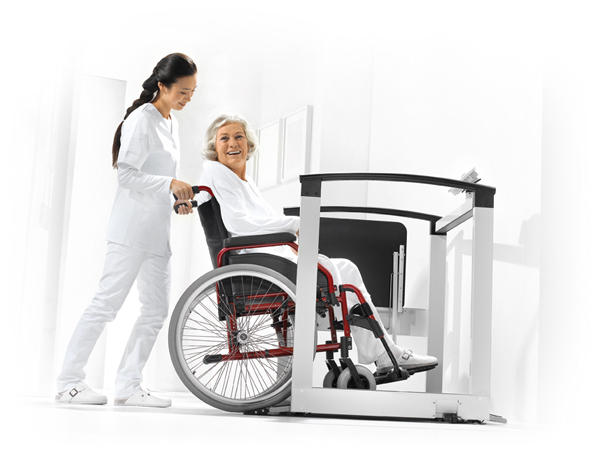Nutritional status in elderly patients.
The elderly are often malnourished and many experience deteriorating senses of taste and smell and some can no longer distinguish between feeling hungry and feeling full. Furthermore, their ability to intake adequate amounts of liquid and nutrients are impaired by their physical limitations or chronic diseases. These health problems increase the risk of suffering from diseases such as thrombosis, bed sores, increased pressure in blood vessels or muscles, delayed healing of wounds and urinary tract infections.
The Body Mass Index (BMI) is a recognised method for assessing nutritional status. The BMI calculation uses body weight and height. As patients age, doctors would like to observe a higher BMI value. In addition, doctors must pay close attention to changes in the patient’s weight because unintentional weight loss signals health concerns. The percentages in the table (below) are considered to be critical. A 65 kg individual should lose between 0.7 kg to 1.1 kg in a week. Consequently, in order to achieve such measurements you will need a seca scale which is capable of accurately and precisely measuring to 0.001%.

Normal BMI range according to age:
19-24 years 19-24 kg/m²
25-34 years 20-25 kg/m²
35-44 years 21-26 kg/m²
45-54 years 22-27 kg/m²
55-64 years 23-28 kg/m²
≥ 65 years 24-29 kg/m²
Critical weight loss:
1-2% in 1 week
5% in 1 month
7.5% in 3 months
10% in 6 months
The Body Mass Index (BMI) is a recognised method for assessing nutritional status. The BMI calculation uses body weight and height. As patients age, doctors would like to observe a higher BMI value. In addition, doctors must pay close attention to changes in the patient’s weight because unintentional weight loss signals health concerns. The percentages in the table (below) are considered to be critical. A 65 kg individual should lose between 0.7 kg to 1.1 kg in a week. Consequently, in order to achieve such measurements you will need a seca scale which is capable of accurately and precisely measuring to 0.001%.

Normal BMI range according to age:
19-24 years 19-24 kg/m²
25-34 years 20-25 kg/m²
35-44 years 21-26 kg/m²
45-54 years 22-27 kg/m²
55-64 years 23-28 kg/m²
≥ 65 years 24-29 kg/m²
Critical weight loss:
1-2% in 1 week
5% in 1 month
7.5% in 3 months
10% in 6 months